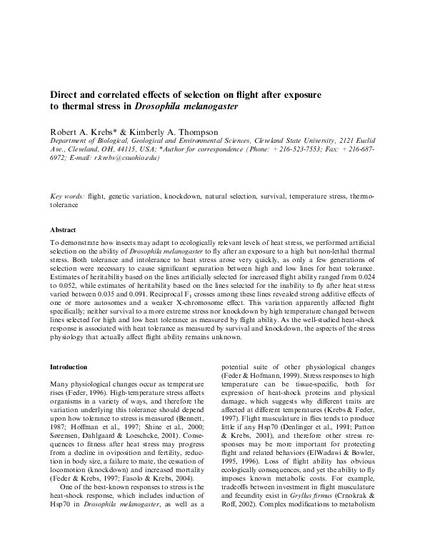
To demonstrate how insects may adapt to ecologically relevant levels of heat stress, we performed artificial selection on the ability of Drosophila melanogaster to fly after an exposure to a high but non-lethal thermal stress. Both tolerance and intolerance to heat stress arose very quickly, as only a few generations of selection were necessary to cause significant separation between high and low lines for heat tolerance. Estimates of heritability based on the lines artificially selected for increased flight ability ranged from 0.024 to 0.052, while estimates of heritability based on the lines selected for the inability to fly after heat stress varied between 0.035 and 0.091. Reciprocal F1 crosses among these lines revealed strong additive effects of one or more autosomes and a weaker X-chromosome effect. This variation apparently affected flight specifically; neither survival to a more extreme stress nor knockdown by high temperature changed between lines selected for high and low heat tolerance as measured by flight ability. As the well-studied heat-shock response is associated with heat tolerance as measured by survival and knockdown, the aspects of the stress physiology that actually affect flight ability remains unknown.
